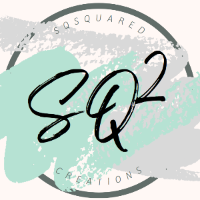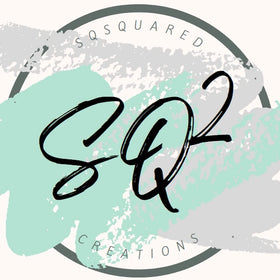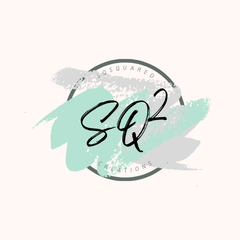Buying a handmade quilt isn’t quite like buying a throw blanket off a store shelf—and that’s a good thing. Whether it’s your first time or you’re finally ready to invest in one that feels just right, there are a few key things to know before you click add to cart.
From understanding what makes a quilt truly handmade to knowing how to care for it, this quick guide will help you shop with confidence and find a quilt you’ll love for years to come.
1. Not All Quilts Are Truly Handmade
These days, the word “handmade” gets tossed around a lot—but not everything labeled that way actually lives up to the name. A true handmade quilt is created by a person, not a factory. That means real choices were made—about color, fabric, layout, and stitching—and no two quilts are ever exactly alike.
Some people assume that “handmade” means sewn entirely by hand, stitch by stitch. And while that’s one way to make a quilt, it’s not the only way—or even the most common. Most modern quiltmakers, myself included, use sewing machines for piecing and quilting. It’s still handmade because every step—cutting, arranging, stitching, binding—is done by one person with care, not mass-produced on an assembly line.
If every decision is made by a human, not a factory… if every stitch is part of a deliberate process… then it’s handmade. And that difference shows in the final piece: no shortcuts, no corners cut, and no duplicate version sitting on a shelf somewhere else.
2. Price Reflects Time, Materials, and Skill
Handmade quilts often come with a higher price tag than store-bought blankets—and that can surprise people at first. But when you understand what goes into making a quilt, the numbers make sense.
A quality quilt isn’t just fabric and thread. It’s hours (sometimes days) of planning, cutting, sewing, pressing, quilting, and binding. It’s the maker’s experience—years of practice, precision, and patience poured into every step. And it’s the cost of using high-quality materials like 100% cotton fabrics and natural fiber batting, chosen not for bulk pricing but for durability, comfort, and feel.
What many people don’t realize is that quiltmakers rarely have access to wholesale fabric pricing. Unlike fabric stores (often called “quilt shops”) that resell fabric by the yard, quiltmakers buy fabric to use—not to resell—so they pay the same retail prices as anyone walking into the store. That means every fat quarter, thread spool, and batting roll is purchased at full price before a single stitch is even made.
When you buy a handmade quilt, you’re not just covering the cost of fabric and time—you’re supporting the craft, the care, and the commitment it takes to create something truly lasting.
3. Not All Quilts Are Created Equal
Just like with furniture, clothing, or really anything handmade, the quality of quilts can vary—a lot. Two quilts might look similar in a photo, but the difference shows up in the details.
Things like fabric quality, piecing accuracy, stitching durability, and how the quilt is finished all affect how it looks, feels, and holds up over time. Some quilts are made quickly for mass resale, using low-cost materials and shortcuts in construction. Others are made to be heirlooms—crafted with intention, care, and materials that are built to last.
Even thread makes a difference. Many mass-produced quilts use polyester thread like Coats & Clark, which can eventually cut through natural cotton fabrics over time. A quality handmade quilt uses cotton thread with cotton fabric to maintain strength and flexibility as it ages—no unexpected unraveling or fabric breakdown years down the line.
It also matters how the quilt is finished. While some makers prewash their fabric, others (like myself) prewash the completed quilt instead. That final wash ensures no colors bleed, no shrinking surprises, and that what you see—and feel—is exactly what you'll get from day one. My measurements are always based on the finished, washed quilt so you can be confident it fits your space from the moment it arrives.
Knowing what goes into a well-made quilt helps you invest in one that will stay beautiful and functional for years—not just a season.
4. Size and Purpose Matter More Than You Think
When you’re buying a handmade quilt, it’s worth thinking about how and where you plan to use it. Is it for a baby’s crib, a throw for the couch, a reading nook, or the foot of a king-size bed? The right size and style can make all the difference in how much you actually use—and love—your quilt.
Unlike mass-produced bedding, quilt sizing isn’t one-size-fits-all. That’s why it’s so important to check the actual measurements—especially for bed quilts. Don’t just go by the label (like "queen" or "throw"); measure your space and think about how much overhang you prefer on the sides and foot of the bed. Some people love a dramatic drape, while others want a more tailored look that shows off the bed frame.
And don’t forget to consider how you use quilts seasonally. A lightweight throw might be perfect for summer naps, while a larger bed quilt can be layered for extra warmth in the winter. Having the right size for each need means your quilt won’t just be beautiful—it’ll be useful year-round.
If you’re not sure where to start, check out this guide on quilt sizing—it breaks down the most common dimensions and how to choose the right one for your space.
5. Caring for a Quilt Is Easier Than You Think
One of the most common concerns people have about handmade quilts is, “How do I take care of it?” The good news: it’s probably easier than you think.
Most handmade quilts—especially those made with 100% cotton—are machine washable on a gentle cycle with cold water and a mild detergent. Tumble dry on low or air dry flat, and your quilt will hold up beautifully for years. A little fading and softening over time is completely normal—and for many quilt lovers, it’s part of the charm.
You don’t need to baby a handmade quilt. In fact, they’re meant to be used. Whether you’re wrapping up in it every night, building a blanket fort, or folding it at the foot of the bed, your quilt can handle everyday life and still look great doing it.
You can also extend the life of your quilt by skipping fabric softeners, avoiding bleach, and storing it loosely folded in a dry space when not in use—never in plastic, which can trap moisture. But overall, quilts are low-maintenance by design. They're meant to be loved, not locked away.
Final Thoughts
Buying a handmade quilt is more than just checking off a box on your home décor list—it’s choosing something personal, practical, and made to last. When you know what to look for, it’s easy to find the one that’s just right for your space, your style, and your story.




Leave a comment